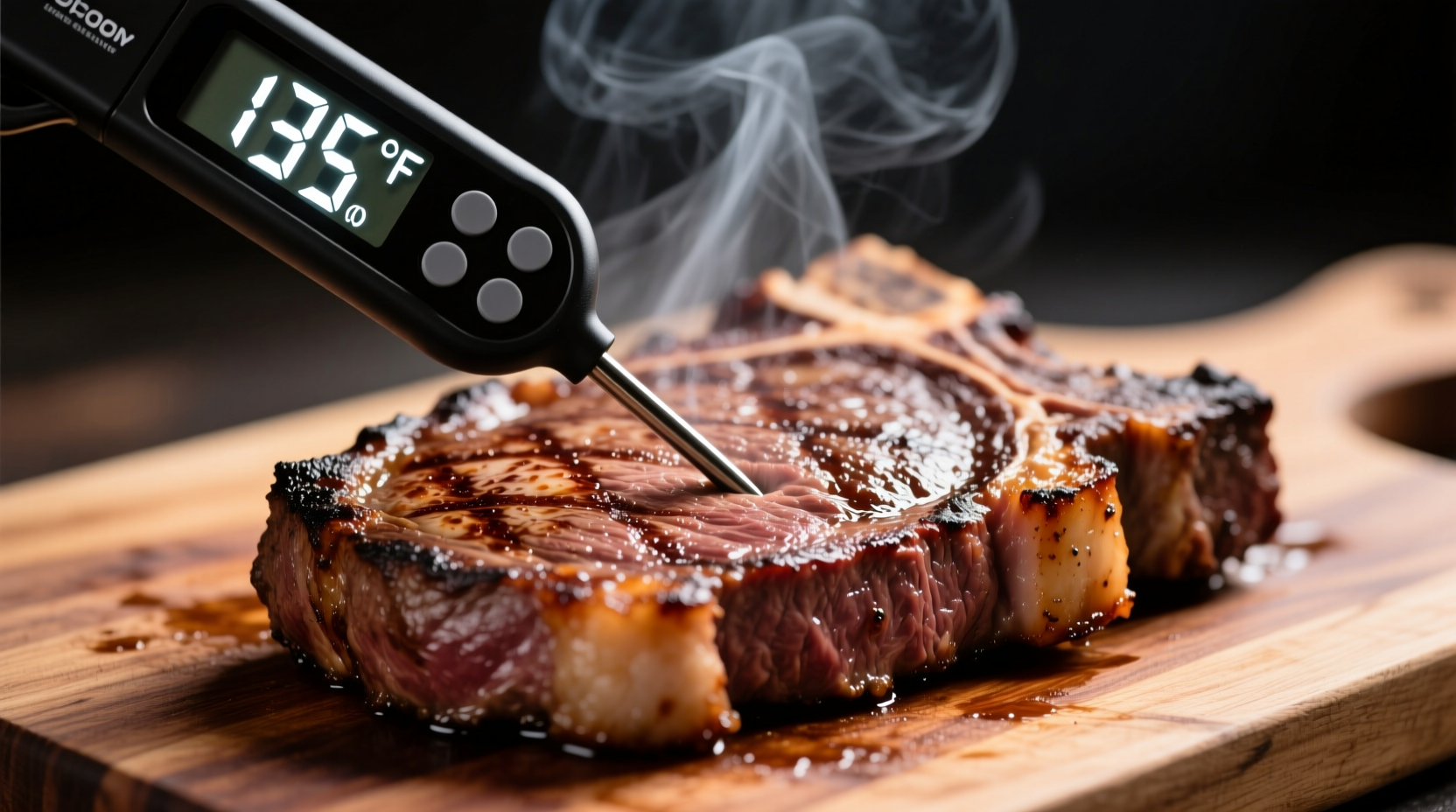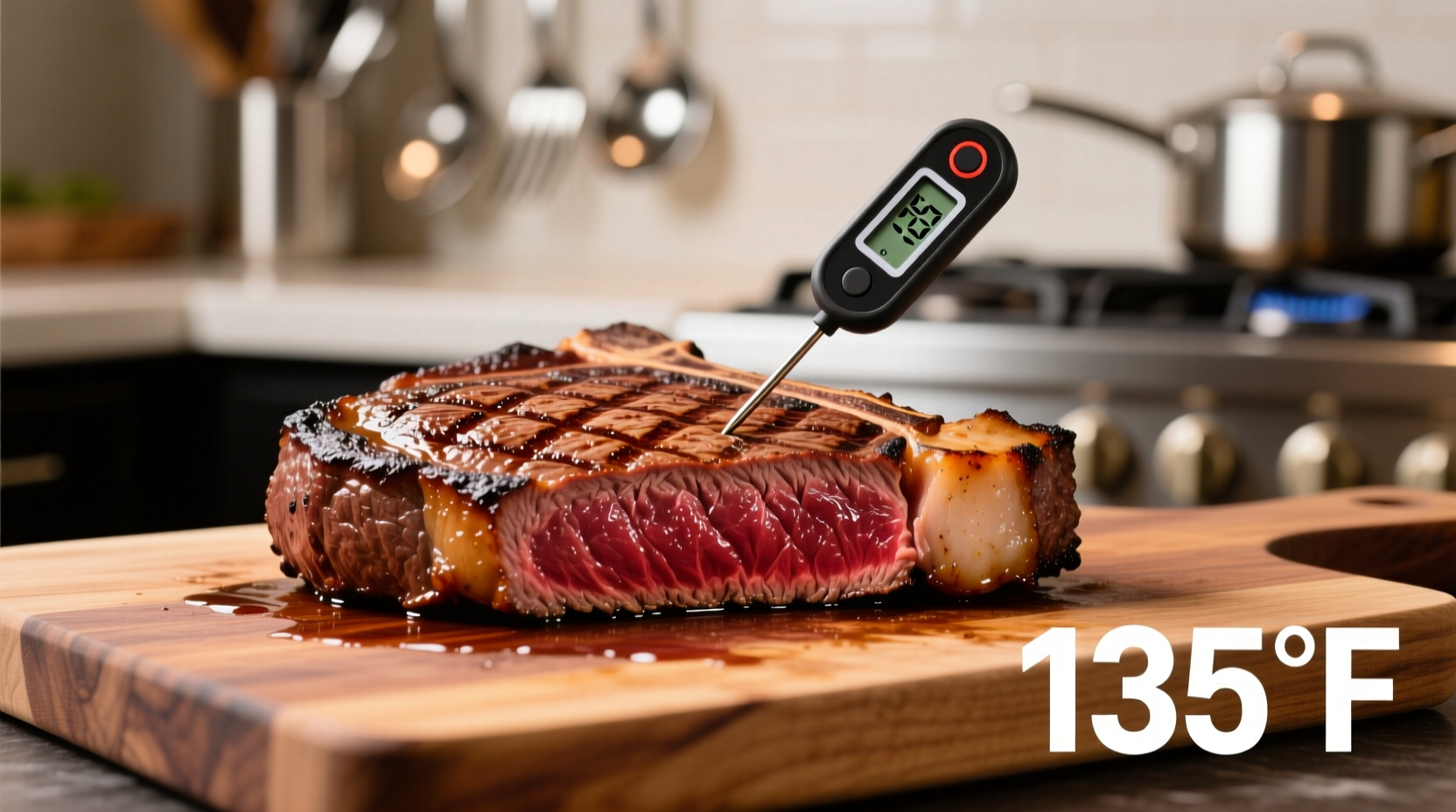Why Beef Temperature Matters: Safety and Quality Combined
Getting beef temperature right isn't just about preference—it's a critical food safety practice that also determines texture, juiciness, and flavor development. Undercooked beef risks foodborne illness from pathogens like E. coli, while overcooked beef becomes tough and dry. The perfect temperature balance delivers both safety and exceptional eating quality.
Understanding Beef Temperature Guidelines
Temperature requirements vary based on cut type and preparation method. Whole muscle cuts (like steaks and roasts) require different temperatures than ground beef, where bacteria can spread throughout the product during processing.
| Beef Type | USDA Minimum Safe Temp | Rare | Medium-Rare | Medium | Medium-Well | Well-Done |
|---|---|---|---|---|---|---|
| Steaks & Roasts | 145°F (63°C) + 3 min rest | 120-130°F (49-54°C) | 130-135°F (54-57°C) | 135-145°F (57-63°C) | 145-155°F (63-68°C) | 155°F+ (68°C+) |
| Ground Beef | 160°F (71°C) | Not recommended | Not recommended | Not recommended | Not recommended | 160°F+ (71°C+) |
| Pre-cooked Ham | 140°F (60°C) | N/A | N/A | N/A | N/A | 140°F (60°C) |
This comparison shows both regulatory safety standards and culinary preferences. Note that the USDA minimum for whole cuts (145°F) represents medium doneness—many chefs recommend removing beef from heat at lower temperatures since carryover cooking will raise the internal temperature 5-10°F during resting.
How Temperature Recommendations Have Evolved
Beef cooking guidelines have changed significantly over time as food science has advanced. In the 1940s, recommendations focused primarily on visual cues rather than precise temperatures. The first USDA temperature guidelines appeared in the 1970s, initially setting safe temperatures higher than current standards. Modern understanding of bacterial die-off rates at specific temperatures has allowed for slightly lower safe temperatures while maintaining food safety.
According to research from the USDA Food Safety and Inspection Service, pathogens like E. coli O157:H7 are destroyed when beef reaches 140°F (60°C) and is held there for at least 12 minutes, or at 145°F (63°C) for just 3 minutes. This scientific understanding forms the basis for current recommendations.
Measuring Temperature Accurately: The Professional Approach
Using an instant-read thermometer correctly is essential for accurate results:
- Insert the probe into the thickest part of the meat, avoiding bone, fat, or gristle
- For steaks, insert horizontally from the side to measure the center temperature
- Check multiple spots in larger roasts to ensure even cooking
- Calibrate your thermometer regularly using ice water (32°F/0°C) or boiling water (212°F/100°C)

Temperature Variations by Cut and Cooking Method
Different beef cuts require nuanced temperature approaches:
- Thick cuts (ribeye, strip steak): Remove from heat 5-10°F below target temperature to account for carryover cooking
- Thin cuts (flank, skirt steak): Cook quickly to medium-rare (130-135°F) as they overcook easily
- Roasts (prime rib, chuck): Target 125-130°F for medium-rare, allowing 10-15°F temperature rise during resting
- Brisket/pot roast: Cook to 195-205°F (90-96°C) for proper collagen breakdown
Grilling requires different temperature management than sous vide or oven roasting. When grilling, create a two-zone fire to control heat exposure after the initial sear. For sous vide cooking, precise temperature control allows cooking at exact doneness temperatures for extended periods.
The Critical Resting Period: Why It Matters
Resting meat after cooking serves two essential functions:
- Temperature equalization: Heat continues to penetrate the meat during resting, raising the internal temperature 5-15°F
- Juice redistribution: Muscle fibers relax, allowing juices to redistribute throughout the cut rather than running out when cut
Resting time varies by cut size:
- Steaks (1-1.5 inches): 5-10 minutes
- Thick steaks (1.5-2 inches): 10-15 minutes
- Large roasts: 15-30 minutes
Avoiding Common Temperature Mistakes
Even experienced cooks make these temperature errors:
- Testing too frequently: Each thermometer insertion releases juices and slows cooking
- Relying on color: Beef can appear pink even when properly cooked due to myoglobin reactions
- Ignoring carryover cooking: Removing meat at target temperature results in overcooking
- Not calibrating thermometers: Inaccurate readings lead to unsafe or poor-quality results
Professional chefs emphasize that understanding your specific cooking equipment is crucial. Oven temperatures can vary by 25°F or more from the set point, and grill hot spots create uneven cooking zones.
Practical Temperature Tips for Home Cooks
Implement these techniques for perfect results every time:
- Bring beef to room temperature (30-60 minutes) before cooking for more even temperature distribution
- Use the touch test as a secondary indicator: rare feels like the base of your thumb when touching index finger
- For thicker cuts, sear first then finish in a moderate oven (325°F) to control temperature rise
- When in doubt, cook to a slightly lower temperature—you can always cook more, but you can't undo overcooking











 浙公网安备
33010002000092号
浙公网安备
33010002000092号 浙B2-20120091-4
浙B2-20120091-4